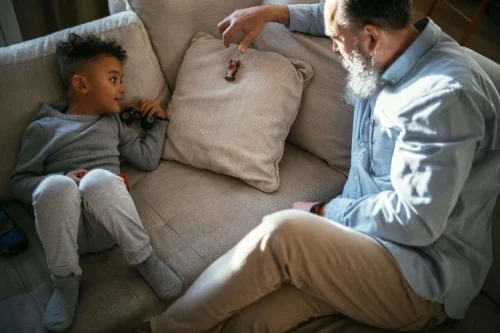How to Pick the Best Therapeutic Options for Your Anxious Child
Traditional talk therapy and play therapy both aim to help children work through anxiety, but they take very different paths to get there. Think of it this way: if anxiety is a locked door, talk therapy uses conversation as the key, while play therapy uses toys, games, and creative expression to unlock that same door. The main difference lies in how children naturally communicate. While adults typically process emotions through words, children, especially younger ones, process their world through play.
Understanding Play Therapy
Play therapy recognizes that play is a child's natural form of communication. In the playroom, children use toys, art materials, sand trays, and games to express feelings they may not yet have words for. A child might use dolls to act out scary situations, build towers and knock them down to express frustration, or create artwork that shows how anxiety feels in their body.
In child-centered play therapy, the therapist follows the child's lead, allowing them to direct the play while maintaining a safe and accepting presence. This approach trusts in children's natural ability to work through their struggles when given the right environment and support. The therapist doesn't direct the child to talk about anxiety specifically; instead, the child naturally works through anxious feelings as they play.
What Actually Happens in a Play Therapy Session?
Parents often wonder what goes on behind the playroom door. A typical play therapy session might look like "just playing" to an outside observer, but therapeutic work is happening on multiple levels. The therapist creates a special environment with carefully selected toys that encourage emotional expression, such as dolls and family figures, art supplies, puppets, building blocks, and miniatures for sand tray work.
During the session, your child might create a sand tray scene representing their worries, engage in puppet shows where they work through social anxiety, or paint pictures that help release emotional tension. The therapist reflects and validates the child's feelings without judgment, helping them feel understood and accepted. Over time, children naturally move toward resolution and healing through their play.
Understanding Traditional Talk Therapy
Traditional talk therapy involves verbal communication between the child and therapist. The therapist might ask questions about the child's worries, help them identify triggers, and teach specific coping strategies. This approach works well for children who can articulate their feelings and think abstractly about their experiences.
In talk therapy for children, therapists often adapt their approach to be more engaging than adult therapy. They might use worksheets, storytelling, or interactive discussions rather than just sitting and talking. The focus remains on verbal processing and cognitive understanding of anxiety, but it's delivered in an age-appropriate way.
The Skills Each Approach Builds
Both therapeutic approaches help children develop important skills for managing anxiety, though they go about it differently.
Through play therapy, children develop:
Emotional regulation through playing out scenarios
Ability to express feelings through symbolic play
Confidence through making choices in the playroom
Problem-solving skills as they navigate play scenarios
Stronger sense of self and personal power
Natural processing of difficult experiences
Trust in relationships through the therapeutic bond
Talk therapy helps children develop:
Ability to identify and label emotions accurately
Understanding of anxiety triggers and patterns
Specific coping strategies they can articulate and use
Communication skills for expressing needs
Cognitive tools for challenging worried thoughts
Relaxation and mindfulness techniques
Social skills for managing anxiety in relationships
How Long Does Each Approach Take?
Parents naturally want to know how long their child will need therapy. While every child is unique, there are some general patterns to consider. Play therapy often requires patience, as children work through anxiety at their own pace. Some children show improvement within a few months, while others need longer to build trust and work through deeper anxieties. Talk therapy might show more immediate results in terms of symptom management, especially for specific anxieties like test anxiety or social fears.
If your child is old enough, involve them in the decision. Even young children can express preferences about whether they'd rather "play" or "talk" with someone about their worries. Book a consultation today to learn how play counseling can help your child.

